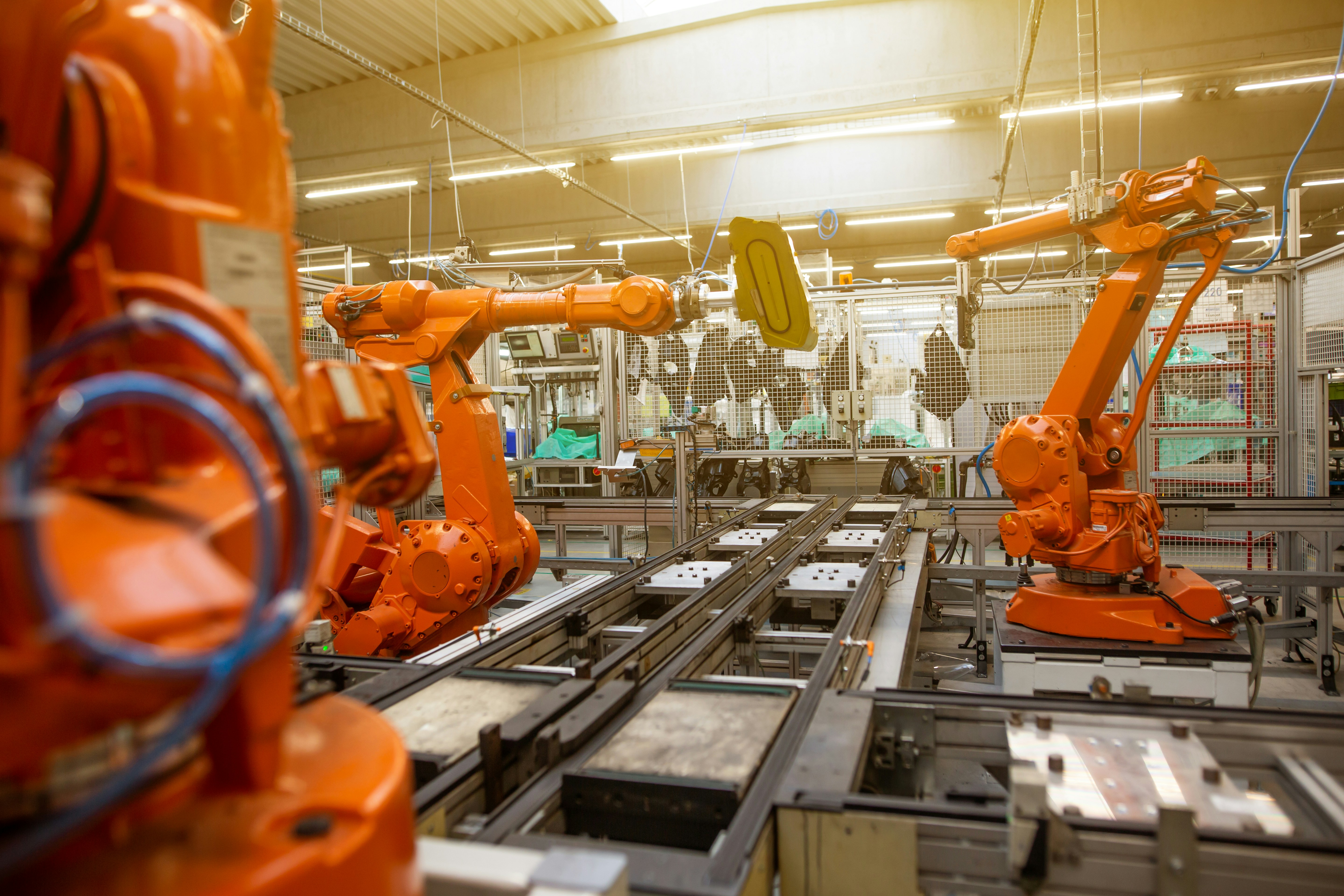
Building the Ultimate Robotics Skill Set: Technical and Soft Skills Employers Want in 2025
In recent years, robotics has transitioned from industrial assembly lines and research labs into fields as diverse as healthcare, agriculture, logistics, space exploration, hospitality, and beyond. Fuelled by breakthroughs in sensing, artificial intelligence, and materials science, robots are becoming increasingly capable, adaptive, and autonomous—opening a wealth of opportunities for skilled professionals. Here in the UK, the demand for robotics experts continues to surge, with start-ups, established manufacturers, and government-backed initiatives all seeking talent that can design, program, and deploy sophisticated robotic systems.
But thriving in robotics isn’t just about mastering motors, actuators, or motion planning algorithms. By 2025, employers will prioritise an integrated skill set spanning deep technical knowledge and the soft skills that ensure every innovation aligns with practical constraints and organisational goals. Whether you’re a seasoned engineer or just starting your journey in robotics, understanding the competencies that matter—and how to showcase them—will be vital for long-term success.
In this comprehensive article, we’ll outline the essential skill set for robotics professionals aiming to stand out in an ever-evolving sector. We’ll look at core technical proficiencies, explore why soft skills are just as crucial, and map out practical steps for developing and demonstrating your expertise. By the end, you’ll have a roadmap to help you navigate the robotics job market with confidence, adapting to the rapid technological changes shaping tomorrow’s automated world.
1. Why Robotics Skills Matter More Than Ever
1.1 The Expanding Role of Robotics Across Industries
Robotics is no longer confined to high-volume manufacturing lines. From autonomous vehicles and warehouse robots to personal assistants and surgical machines, new applications emerge daily. By 2025:
Healthcare: Robots assist surgeons with precision operations, move supplies in hospitals, and provide social interaction for patients in isolation or with special needs.
Agriculture: Automated harvesting drones, weeding robots, and real-time crop monitoring systems help farmers manage yields more efficiently, tackling labour shortages and sustainability targets.
Retail and Logistics: Warehousing robots (like those from Amazon or Ocado) are accelerating supply chain operations, reducing costs and delivery times, and transforming consumer expectations.
Service and Hospitality: “Cobot” (collaborative robot) bartenders and cleaning robots are starting to appear in hotels, airports, and restaurants, enhancing service consistency and speed.
Given this surge, UK companies and public institutions are racing to adopt or pilot robotic solutions, raising the demand for skilled specialists who can integrate cutting-edge designs into real-world settings.
1.2 Emerging Robotics Sectors and Start-ups
Alongside large corporations, a vibrant start-up scene has blossomed around niche robotics solutions:
Inspection and Maintenance Drones for offshore wind farms, bridges, or sewers.
Underwater Robotics for environmental surveys, pipeline checks, or aquaculture tasks.
Assistive Exoskeletons supporting individuals with reduced mobility or helping workers lift heavy objects safely.
Autonomous Delivery Robots for short-range, last-mile deliveries.
The UK’s commitment to research and development (R&D)—bolstered by government incentives, incubators, and strong links between universities and industry—means the robotics job market will remain vibrant. Employers seek individuals who can navigate mechatronic design, AI, and user-centric development simultaneously.
1.3 The Intersection with AI, Cloud, and IoT
Modern robots don’t just move in isolated environments; they often connect with cloud services, utilise artificial intelligence for decision-making, and form part of an Internet of Things (IoT) ecosystem. Having a holistic view—understanding how machine learning, networking, and edge computing converge—is increasingly essential. By 2025, robotics professionals who can balance hardware constraints with advanced software features will be especially prized.
2. Core Technical Skills for Robotics Professionals in 2025
2.1 Mechanical and Electrical Engineering Foundations
Robotics sits at the intersection of mechanical, electrical, and computer engineering. By 2025, employers expect a solid foundation in:
Mechanisms and Actuators: Knowledge of gears, linkages, servos, stepper motors, and hydraulic or pneumatic systems.
Materials Science: Choosing components for durability, weight, and cost-effectiveness, especially in collaborative or extreme environments (e.g., underwater or outer space).
Electronics and PCB Design: Translating sensor inputs and control signals into functional printed circuit boards or integrated modules.
Even if your ultimate path leans toward AI or software, understanding these hardware nuances ensures your solutions work robustly in the real world.
2.2 Control Systems and Motion Planning
Robotics is fundamentally about controlling motion with precision and adaptability. Skills you’ll need:
Classical Control Theory: PID controllers, state-space representations, and system stability analysis.
Modern Control and State Estimation: Kalman filters, extended or unscented variants for sensor fusion, handling uncertainties in dynamic environments.
Motion Planning Algorithms: Pathfinding, sampling-based methods (e.g., RRT*), or trajectory optimisers for advanced manipulator arms or autonomous mobile robots.
Mastering these areas requires a blend of mathematics, simulation (MATLAB, Simulink), and practice with real hardware setups. By 2025, advanced control and planning knowledge will remain a hallmark of well-rounded robotics engineers.
2.3 Robot Operating Systems (ROS) and Middleware
The Robot Operating System (ROS) has become the de facto middleware standard, enabling modular software architectures and powerful libraries for perception, localisation, and more. Even with new frameworks emerging (ROS 2, for instance), ROS expertise remains vital for:
Sensor and Actuator Integration: Developing nodes that communicate seamlessly, bridging hardware drivers with AI modules.
Simulation and Visualisation: Tools like Gazebo, RViz, or MoveIt help validate designs before deployment.
Community Libraries: An open-source ecosystem providing re-usable code for path planning, mapping, or 3D perception.
Familiarity with alternative or complementary frameworks—like YARP, LCM, or proprietary vendor systems—can also help meet diverse industry demands.
2.4 Computer Vision and Perception
Many modern robots rely on vision systems to understand and interact with their surroundings. By 2025, computer vision and perception skills will be more critical than ever:
Camera Calibration and Stereo Vision: Extracting 3D information from 2D images or multiple viewpoints.
Deep Learning for Object Detection: Leveraging convolutional neural networks (CNNs) to identify and track objects in real-time.
SLAM (Simultaneous Localisation and Mapping): Fusing data from LiDAR, cameras, or IMUs to help robots autonomously map unfamiliar environments.
Sensor Fusion: Combining multiple data sources—vision, ultrasound, force sensors—for robust scene understanding.
As AI-driven methods dominate perception, bridging classical image processing with neural network inference will become a must-have skill set.
2.5 AI and Machine Learning for Robotics
Robots increasingly exhibit autonomous decision-making, from high-level strategy to fine-grained control. Building on your perception foundation:
Reinforcement Learning: Training policies for tasks like grasping or navigation. Understanding algorithmic approaches (Q-learning, policy gradients) and reward structures.
Behaviour Trees and State Machines: Structuring an agent’s decision-making for reliability and transparency.
Natural Language Processing (NLP): If your robot interacts verbally with users, basic knowledge of speech recognition and language models helps shape intuitive experiences.
UK employers especially prize engineers who can integrate machine learning or AI frameworks (TensorFlow, PyTorch) directly onto embedded hardware or edge compute platforms for real-time performance.
2.6 Embedded Systems and Real-Time Computing
Robotics demands performance and responsiveness. By 2025, you’ll need to:
Understand Real-Time Operating Systems (RTOS): e.g., FreeRTOS, VxWorks, or embedded Linux, ensuring tasks run deterministically within strict time budgets.
Optimise Code: In C/C++ or Rust, ensuring low latency for sensor feedback loops and controlling motors.
Hardware Acceleration: Exploring FPGA or GPU-based solutions for compute-heavy tasks like visual processing or neural inference.
Low-Power Design: For mobile or battery-powered robots, efficient resource usage extends operational hours.
As robots move into ever more resource-constrained environments (think drones or wearable exoskeletons), embedded expertise becomes an important differentiator.
2.7 Systems Integration and Multi-Robot Coordination
From factories employing fleets of autonomous vehicles to drone swarms, multi-robot systems are becoming common. Employers will seek engineers who:
Design Coordinated Frameworks: Protocols, scheduling algorithms, and local or cloud-based control logic for distributed missions.
Deploy Communication Infrastructures: Wireless networking, bridging 5G or Wi-Fi to ensure reliable data sharing among robots.
Manage Interoperability: Implementing standardised messages or APIs so robots from different vendors can collaborate.
Coordinating multiple robots can drastically improve efficiency in warehouses, farms, or emergency response scenarios—integration specialists with strong networking and concurrency knowledge will be in high demand.
3. Essential Soft Skills for Robotics in 2025
3.1 Communication with Technical and Non-Technical Stakeholders
In many robotics projects, the success of a design hinges on how well it’s communicated:
Collaborating with Designers or Mechanical Engineers: Merging software and hardware requirements into seamless prototypes.
Briefing Executives or Clients: Explaining ROI, reliability, safety, and timeline, in straightforward, jargon-free language.
Preparing Documentation: Manuals, user guides, or software design specs for internal teams or customers.
Robotics can be complex—and bridging that complexity with clarity is what fosters stakeholder trust and cross-functional synergy.
3.2 Problem-Solving and Adaptability
Robotics projects often face unexpected challenges:
Hardware Failures: Actuators or sensors might behave unpredictably in real-world conditions.
Software Bugs: Latent issues surface under stress or real-time constraints, requiring rapid debugging and patching.
Changing Requirements: A pilot project might pivot its scope after a proof-of-concept reveals new constraints or opportunities.
Employers value individuals who remain calm, think systematically, and propose creative solutions—particularly under time pressure.
3.3 Project Management and Agile Methodologies
Complex robotics solutions often involve iterative development and cross-functional teams. Agile methods like Scrum or Kanban can keep tasks on track:
Task Prioritisation: Breaking down large goals (e.g., achieving stable walking in a humanoid robot) into sprints, each focusing on a testable feature.
Sprint Reviews and Retros: Regular check-ins to gather feedback from stakeholders, incorporate design improvements, and reassign resources.
Risk Management: Identifying potential technical or budgetary risks early, developing contingency plans.
Having organisational awareness and an agile mindset not only streamlines the engineering process but also fosters transparency across the entire organisation.
3.4 Team Collaboration and Interdisciplinary Cooperation
Robotics thrives on interdisciplinary synergy:
Mechanical, Electrical, and Software Collaboration: Minimising friction during integration so gears, circuits, and code function harmoniously.
Working with Data Scientists: Merging sensor outputs and ML models, aligning on data formats and performance constraints.
Cross-Site Coordination: Teams might span multiple geographical locations or time zones, requiring proactive communication and a readiness to adjust.
Professionals with empathy and respect for varying specialisms can orchestrate more cohesive, high-quality robot solutions.
3.5 Business Awareness and ROI Focus
Beyond technology, employers want to see how your contributions drive tangible value:
Cost–Benefit Analysis: Justifying new hardware or additional sensors based on operational savings, quality improvements, or safety gains.
Market Intelligence: Understanding user needs and competitive landscapes, ensuring product–market fit.
User-Centred Design: In robots used by humans, factoring in ergonomics, ease of use, and aesthetics can separate a commercial success from a flop.
Professionals who frame technical decisions within a bigger-picture context are likely to influence strategic direction and secure stakeholder buy-in.
3.6 Lifelong Learning and Staying Current
By 2025, robotics will continue to advance swiftly. Employers gravitate toward:
Curiosity: Constantly exploring new algorithms, sensors, or collaborative robotics paradigms.
Adaptability: Willingness to pivot technology stacks when a new approach emerges that better satisfies product goals.
Growth Mindset: Being open to constructive feedback, acknowledging mistakes, and using them as stepping stones.
A hunger for learning helps you remain agile in a domain that demands frequent leaps in hardware, software, and integration complexities.
4. Building and Demonstrating Your Ultimate Robotics Skill Set
4.1 Formal Education, Certifications, and Workshops
University Degrees: Degrees in Robotics, Mechatronics, Mechanical/Electrical Engineering, or Computer Science provide fundamental theory.
Certifications: Though less common in robotics than in IT fields, specialised short courses or vendor-based training (e.g., for particular robotic arms, ROS distributions) can showcase niche competencies.
Workshops and Bootcamps: Focused intensives on topics like advanced ROS, computer vision, or AI in robotics can supercharge your skill set quickly.
4.2 Hands-On Projects and Portfolios
Nothing speaks louder than practical experience:
Personal Robot Builds: Tinker with a DIY robotics kit, microcontrollers (Arduino, Raspberry Pi), or 3D-printed frames. Document your process, from design to testing.
ROS Projects: Open-source projects that highlight your ability to integrate sensors, run SLAM, or build path planners.
Hackathons and Competitions: RoboCup, FIRST Robotics, or local events let you collaborate under time pressure, hone problem-solving, and deliver functional prototypes.
Internships: Stints at robotics labs or start-ups can offer insights into real-world manufacturing constraints, budgets, and client expectations.
Compiling these experiences into a portfolio—complete with videos, GitHub repos, and design diaries—shows prospective employers you can translate theory into functional solutions.
4.3 Networking and Community Involvement
In a domain as collaborative as robotics, professional networks matter:
Meetups and Conferences: UK-based gatherings like Robotics and Automation events, or academic conferences (e.g., ICRA, IROS), foster relationships with peers, researchers, and hiring managers.
Online Forums: Engaging with ROS Discourse, robotics subreddits, or LinkedIn groups helps you stay informed on best practices and job postings.
Open-Source Contributions: Enhancing or debugging open-source robotics libraries, from sensor drivers to machine learning modules, can showcase your expertise globally.
4.4 Demonstrating Soft Skills During Interviews
While showing your robotics prowess is key, interviews also test how you’ll work with teams:
Real-World Examples: Discuss how you handled hardware–software integration mishaps, overcame cost constraints, or brokered team conflicts.
Structured Problem-Solving: Communicate your approach to tackling a tricky design challenge, emphasising how you validated ideas and responded to unexpected results.
Active Listening and Clarity: Respond precisely to the interviewer’s questions, clarifying requirements or constraints as needed. This shows you’d communicate effectively with stakeholders.
5. The Future of Robotics Jobs in the UK
5.1 Key Sectors Driving Demand
Manufacturing: Ongoing automation in factories, including “lights-out” operations, where robots run with minimal human supervision.
Healthcare and MedTech: Surgical robots, rehabilitation devices, and personal healthcare assistants form a growing segment.
Autonomous Vehicles: From driverless cars on roads to self-navigating drones in warehouses, pilot projects increasingly require multi-disciplinary robotics know-how.
Agritech: Addressing labour shortages and sustainability through robotic harvesters, orchard sprayers, and integrated data platforms.
Defence and Security: Advanced surveillance drones, bomb disposal units, and emergency response robots, with strong government backing.
5.2 Addressing the Skills Shortage
The push for automation and robotics means talent demand outstrips supply in several subfields. Companies may:
Offer Premium Packages: Competitive salaries, relocation support, or training budgets to attract top candidates.
Hire for Potential: Prioritising problem-solving and adaptability over direct experience, especially for advanced R&D roles.
Collaborate with Universities: Tapping student projects, internships, or sponsored labs to funnel skilled graduates into industry.
This environment presents ample opportunity for job seekers who invest in the right skill mix.
5.3 Sustainability, Ethics, and Regulations
As robotics transforms workplaces and lifestyles, ethical and social considerations intensify:
Health and Safety Standards: Ensuring collaborative robots remain safe around humans, adopting ISO standards, or CE marking processes.
Environmental Impact: Developing robots with minimal energy consumption, using recycled materials, or building modular designs for longevity.
Job Displacement: Addressing concerns about automation replacing human roles, focusing on upskilling existing workers for robotic supervision or maintenance.
Privacy and Data Handling: Some robots capture video or personal data, so compliance with GDPR and other privacy regulations is paramount.
By 2025, robotics specialists who navigate these complexities responsibly can guide organisations towards socially responsible and legally compliant solutions.
6. Conclusion: Charting Your Path to Robotics Excellence
Robotics stands at the forefront of technological innovation, reshaping how we work, live, and solve global challenges. By 2025, the skill set employers demand will blend:
Core Technical Mastery: Mechanical and electrical engineering, control systems, AI-driven perception, embedded architectures, and multi-robot orchestration.
Soft Skill Sophistication: Communication, adaptability, cross-team collaboration, and a clear view of cost-to-benefit metrics.
A Growth Mindset: Embracing continuous learning, open-source engagement, and the readiness to pivot as new sensors, frameworks, or regulations emerge.
For aspiring professionals or established engineers seeking the next step, the UK’s bustling robotics ecosystem—encompassing everything from local start-ups to global manufacturers—offers a wealth of pathways. By honing both your technical depth and your human-centric abilities to connect, lead, and innovate, you’ll be primed for opportunities across healthcare, agriculture, logistics, and beyond.
Now is the time to cement your robotics foundations, build a standout portfolio, and cultivate the soft skills that let you translate mechanical designs and AI algorithms into real-world success. In an era where robots increasingly partner with humans, your role isn’t just about coding or circuit design—it’s about pioneering tomorrow’s solutions, bridging technology and humanity in ways once limited to science fiction.
Advance Your Robotics Career Today
Ready to bring your skills to the forefront of innovation? Explore the latest robotics job openings across the UK at www.roboticsjobs.co.uk. Whether you’re aiming for a hardware-focused position, diving into AI-based automation, or leading multi-disciplinary teams, our platform connects you with the forward-thinking organisations shaping the future of robots in British industry and beyond.
Seize this opportunity to evolve your expertise, tackle real-world challenges, and help craft the cutting-edge robotic systems that will define 2025—and the decades to come.


